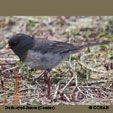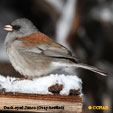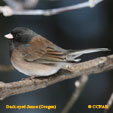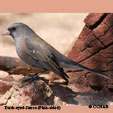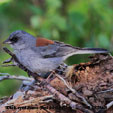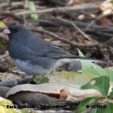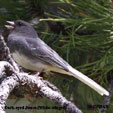North American Bird Search Box
This search box can be used to find bird species using bird's english, french or latin name, or to identify bird by its 4 letter Alpha Code
Field Guide for all the Birds of North America
Dark-eyed Junco
4 Letter (english names) Alpha Code: DEJU (1)
Junco ardoisé
Junco hyemalis
Information, images and range maps on over 1,000 birds of North America, including sub-species, vagrants, introduced birds and possibilities
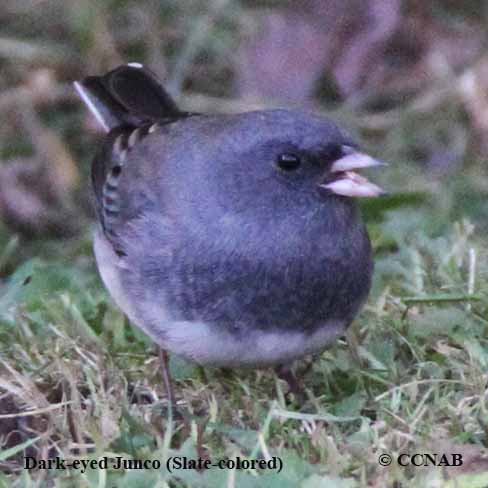
There are many sub-species of the Dark-eyed Junco at this time. This very common junco is seen all over North America and has many sub-species. The Dark-eyed Junco (Slate-colored) is the most common among the group and is seen in most of the continent, at some time during the year. The Dark-eyed Junco (Oregon) is most likely the second most common and is usually seen west of the Rocky Montains, showing up in the eastern regions during the winter months. The Dark-eyed Junco (Pink-sided) is found from the souhern borders of Alberta into the neighbouring northern US states. Then there is the Dark-eyed Junco (White-winged) that is found in the Dakota states. The Dark-eyed Junco (Red-backed) is found in the smallest area of North America and was only recently identified, along the eastern borders of Arizona and the western borders of New Mexico. The Dark-eyed Junco (Gray-headed) is seen in the southeastern regions of the continent. The Dark-eyed Junco (Cassiar) is thought to be a hybrid of the Dark-eyed (Slate-colored) and the Dark-eyed Junco (Oregon) and not a sub-species or race. It is being reported in the northwestern areas of the Rockies during the breeding seasons and throughout a much larger area of North America in the winter months.
North American Birds Videos
- Click here - Slate-colored - Sub-species
North American Bird Calls
- Click here
- Click here
- Click here
- Summer
- Year Around
- Winter
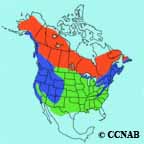
The Dark-eyed Junco is a member of the sparrow family. This grey coloured forest dwelling bird is regularly seen around backyard birdfeeders for a few weeks during the spring and fall migration periods. Although it is usually a ground feeder, it is not uncommon to see them singing from trees.
Reference to Other Bird Site:
ABA - American Birding Association This site represents an organization that maintains official records of all birds species that have been proven to have been seen inside the perimeters of the North American Continent and the surrounding bodies of water. Regular revised versions are posted to keep the bird list current at all times. This is the list used by all serious birders over their lifetime. You may be aware of the movie called the "Big Year". It was with this list that all the competing birders used in an attempt to set a new record as to how many bird species that could be seen by an individual birder in one calendar year.
